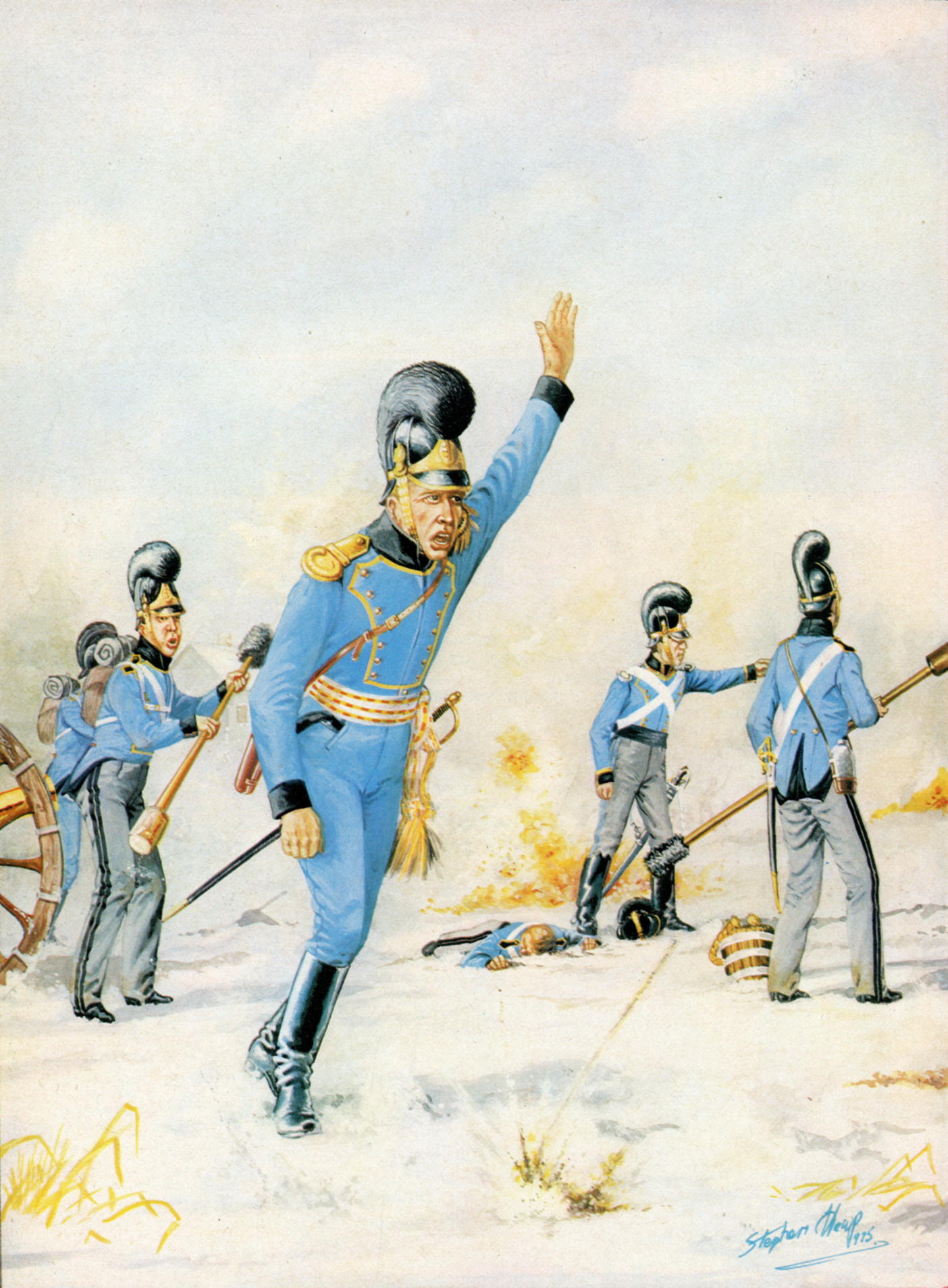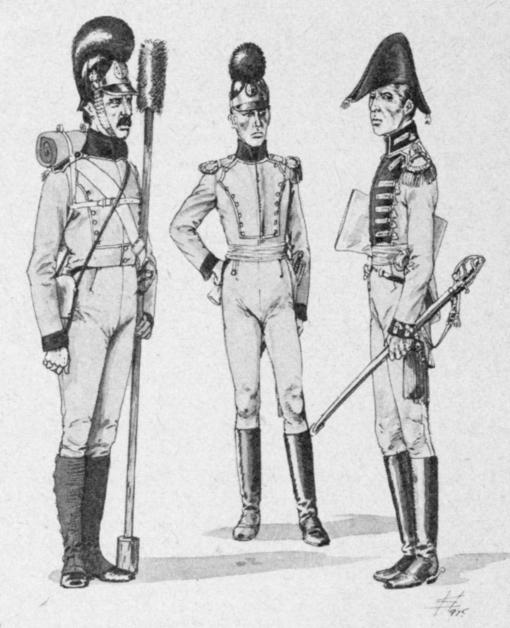Try Amazon Audible Plus

Find the perfect fit with Amazon Prime. Try Before You Buy.
Napoleonic Artillery Uniforms
Military Modelling, January 1976
No. 5 Wurtemberg Artillery, 1812
By Stephen Heap

Foot Artillery.
The foot artillery wore a pale blue coatee with black collar, round cuffs and shoulder straps; the lapels were light blue edged yellow, the shoulder straps were also edged yellow, the turnbacks were black and all buttons were brass.
(Before 1811 the lapels were black).
The leg-wear was also light blue with knee length black gaiters; while on campaign grey leg-wear with black leather reaching up to the knees can be seen in contemporary drawings.
Also long, light grey trousers with a double black stripe on each leg, were worn.
The helmet was of black leather with a black woollen crest; the front plate, chin-scales and grenade chin-scale ornaments were brass as was the edging to the front peak.
The field cap was similar to the Prussian type and was light blue with a black band, although French style field caps were also worn.
The only apparent weapon carried was a slightly curved sabre carried on a white leather belt over the right shoulder; the scabbard was of black leather.
N.C.O.s were distinguished by gold edging to the front and bottom of the collar and edging to the top and rear of the cuffs.
Officers' dress was similar to the men but with gold epaulettes and a silver sash with red and yellow strands.
The officers also wore black knee length boots and, on campaign, long pale blue trousers, sometimes shown with a double gold stripe.
Officers could also wear, on occasion, a black bicorn.
Officers' belts were of black leather.
Horse Artillery.
The mounted branch were similarly dressed but with white metal shoulder scales (in the form of unfringed epaulettes with scales on the straps).
Pale blue breeches and black boots were worn.
The sabre was carried on a white leather belt over the right shoulder, the shoulder belt had two white leather slings attached to the steel scabbard.
On campaign the horse artillery wore light grey overalls with black leather trimming and a double pale blue stripe on each leg.
Black waist sashes were worn by N.C.O.s and men.
Officers had the silver sash as described above.
Horse Artillery of the Guard.
The uniforms of this branch were basically similar to the line horse artillery but, judging by drawings etc., showing the guard horse artillery of c.1893, they would seem to have retained their black lapels, even though the rest of the artillery had pale blue lapels from 1811.
These black lapels were edged yellow and also had white button-hole lace loops with a white tassel on the end of each loop.
The collar was edged yellow on the front and bottom edge and bore on either side one loop and tassel; the cuffs were apparently not edged yellow but did have the white loops and tassels; white gauntlets were also worn.
All buttons were white metal and the shoulder scales were also white metal, as for the line horse artillery.
N.C.O.s would have silver lace edging to the front and bottom of the collar and the top and rear of the cuffs.
Officers' epaulettes, lace loops and tassels etc., were silver; the officers wore the silver, red and yellow sash and the other ranks the black waist sash.
The colour plate illustrates, from left to right:— Gunner in long trousers, Officer, N.C.O. of line horse artillery and gunner.
The wash drawings illustrate, from left to right:— gunner, officer and guard horse artillery officer wearing a bicorn.
In 1813 shakos were introduced; these were fitted with a rear peak and had a white metal plate, side chevrons and cords for the guard artillery and a brass plate for line artillery.
In 1817 the light blue colour of the uniforms was changed to royal blue and, at the same time, the style of the uniform was altered.
Source: pp. 42-43, Military Modelling, January 1976.
Other 19th Century Illustrations of Costume & Soldiers




